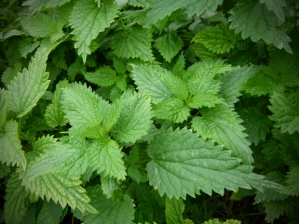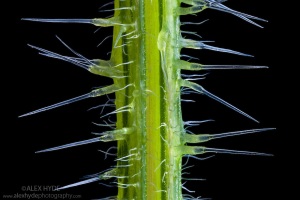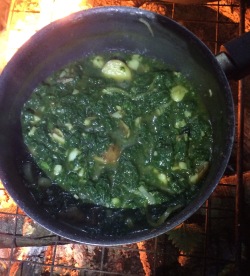WHAT ARE STINGING NETTLES?
The scientific name of stinging nettle is Urtica dioica, and the plant is one of six subspecies within the Urtica genus. The native range of stinging nettle, also known as common nettle in some places, is extensive, including  Africa, Europe, Asia, and North America. The plant itself is relatively small, rarely growing past five feet in height. The leaves and stems in some of the subspecies have long stinging hairs that inject an array of chemicals when touched, including histamine, formic acid, serotonin, and acetylcholine. This produces an irritating, uncomfortable sensation in the skin, which is why some of the other common names for stinging nettle are burn weed and burn nettle.
Africa, Europe, Asia, and North America. The plant itself is relatively small, rarely growing past five feet in height. The leaves and stems in some of the subspecies have long stinging hairs that inject an array of chemicals when touched, including histamine, formic acid, serotonin, and acetylcholine. This produces an irritating, uncomfortable sensation in the skin, which is why some of the other common names for stinging nettle are burn weed and burn nettle.
WHY/HOW DO THEY STING?

Stinging nettles have developed stinging cells as an adaptation to stop herbivores from eating them. The plants contain long, thin, hollow hairs that cover the majority of the stem and the underside of the leaves. Nettle stings contain acid but they also contain histamine and other chemicals, it is the histamine that causes the initial reaction when you are stung. When these compounds come into contact with skin, they cause a painful stinging and burning sensation along with a white rash accented by red, inflamed skin.
A POSITIVE TO STINGING NETTLES?
This herbaceous flowering plant may be considered as an annoyance to many when they brush against its sharp, stinging leaves, but for thousands of years, people around the world have used stinging nettle to treat a wide variety of health conditions, some of the most important health benefits of stinging nettle include its ability to;
- Detoxify the body
- Improve metabolic efficiency
- Boost immune health

- Increase circulation
- Improve energy levels
- Manage menstruation
- Minimise menopausal symptoms
- Heal skin conditions
- Protect kidney and gallbladder health
- Lower inflammation
- Increase muscle mass
- Regulate hormonal activity
- Prevent diabetes
- Lower blood pressure
- Soothe haemorrhoids
- Improve respiratory conditions.
NETTLE SOUP
As well as being an annoyance or a health benefit, nettles can be made into a soup. Nettle soup is a traditional soup prepared from stinging nettles. Nettle soup is eaten mainly during spring and early summer, when young nettle buds are collected. Today, nettle soup is mostly eaten in Scandinavia, Iran, Ireland and Eastern Europe, but historically consumption of nettles was more widespread. Nettle stew was eaten by inhabitants of Britain in the Bronze Age, 3000 years ago.
HOW TO MAKE IT?
1. Wash your nettles well and cut off the tough stalks.
2. Sauté an onion gently in olive oil for five to 10 minutes but don’t allow to brown, add a clove of crushed garlic and sweat half a carrier bag full of nettle leaves until they become soft.
3. Add a diced potato and cover with stock. Simmer for 20 min.
4. Add soya milk, dairy milk, crème fraiche, fresh single or double cream to thin it to the consistency you require.
5. This velvet-green soup has a mineral taste, like strong spinach, and you’ll be pleased to know that all the stinging hairs mysteriously vanish during the cooking process.
https://en.wikipedia.org/wiki/Nettle_soup
http://www.theguardian.com/environment/ethicallivingblog/2009/mar/09/nettles-soup-foraging-wild-free
http://www.hatchmag.com/photo/permit-your-new-addiction
http://andhereweare.net/2014/03/stinging-nettles.html/
http://alexhyde.photoshelter.com/image/I0000blwxLjZq_Xs
http://bioweb.uwlax.edu/bio203/2011/homolka_kail/adaptation.htm
https://www.organicfacts.net/health-benefits/herbs-and-spices/stinging-nettle

See if you can find some close up photos of nettle sting cells – to see HOW the sting works…
LikeLike
I have added how they still with a nice image.
LikeLike